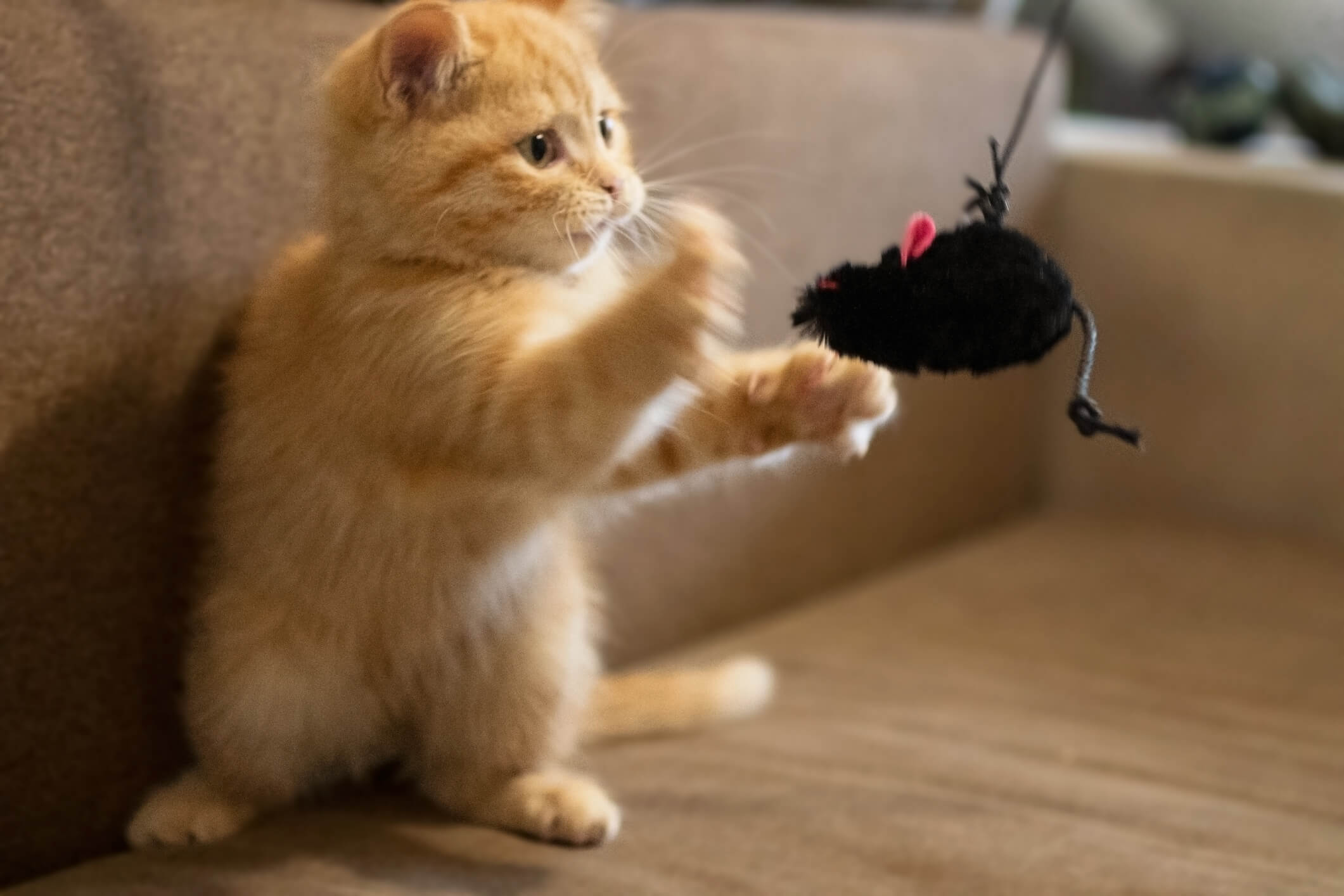
How Much Exercise Does Your Cat Actually Need?
Many owners believe cats don’t need a lot of exercise. It’s easy to see why. Cats are perfectly content to spend most of their time snoozing on the couch. While it’s normal for cats to nap all day, pet parents shouldn’t underestimate the role of exercise in maintaining their cats’ overall physical and mental health.
Pet parents are often at a loss for how much exercise their cats actually need. Many cats don’t get enough exercise, and others might be attempting activities that are too hard on their joints. Learn how your cat’s age and health condition affects their daily exercise routine.
Kittens need the most amount of exercise
Kittens need way more exercise than the average adult cat. They’re young, agile and spry, allowing them to play tirelessly for hours. Also, most kittens don’t have to worry about the chronic diseases that often hinder their senior counterparts. Kittens typically need one to two hours of playtime a day, which you can break down into several play sessions.
You don’t have to be involved the whole time, either. If you own more than one kitten, they’ll keep each other occupied by wrestling, chasing and playing together. Kittens can’t jump as high as adults yet, but they love to climb and sprint all over the house. Help your kitten burn off energy by throwing a toy or pointing a laser pointer down the hallway.

Adult cats need about 30 minutes of exercise
Adult cats aren’t as energetic as kittens, but they still need their daily dose of exercise. When combined with a nutritious diet, daily physical activity can help your adult cat maintain a healthy weight and lower their risk of chronic illnesses. On average, adult cats require 30 minutes of exercise per day. Adult cats prefer exercising in short bursts, so sprinkle a few brief play sessions throughout the day.
There are many ways to exercise your adult cat. At this stage in their life, you should be pretty familiar with your cat’s favorite toys and activities. Some cats love to chase mouse toys while others prefer swatting at feathery teaser wands. Be mindful of your cat’s abilities and limitations, so you don’t accidentally push them too hard during playtime.
Senior cats need low-impact exercise
Senior cats can only tolerate a little bit of exercise, but movement is still important. They have less energy and mobility than younger cats and they often deal with joint pain that can make exercising more difficult. However, senior cats still need to get up and move at least once a day. Doing so can promote a healthy heart, aid in weight management and delay the progression of degenerative joint diseases. Aim for 15 to 20 minutes a day—breaking this time into smaller sessions if necessary.
Your senior cat would benefit the most from light, low-impact activities. These types of activities make it easier to participate because they put less pressure on the joints. Choose toys that don’t require any jumping or running, such as ball tracks and kicker toys. If your cat will allow it, you could put them in a harness and let them explore the backyard. The new sights and smells may encourage your senior cat to move their body and stay active.
Exercising a cat with health concerns
The various exercise schedules mentioned here are simply guidelines. Your cat’s unique health condition will determine the most appropriate activities and how much they exercise each day. Your vet might prescribe a custom exercise regimen if your cat is living with a disability, diabetes, obesity, arthritis, heart problems or kidney disease. Follow the vet’s recommendations and choose activities that align with your cat’s physical capabilities.
For instance, cats with arthritis probably won’t be able to partake in the same activities as healthier adult cats. They might only tolerate 15 minutes of movement a day, and they often require even shorter play sessions. A few quick, gentle exercises can help minimize arthritic pain and strengthen muscle groups that stabilize the joints.
On the other hand, cats struggling with obesity might need more exercise than usual. This often coincides with restricting their calorie intake under a vet’s guidance. Overweight cats are less motivated to exercise, so it’s better to stick with short bursts of playtime. Experiment with different ways to pique your cat’s interest, such as giving them new toys or buying ones infused with catnip.
Several factors influence your cat’s exercise needs. Their age and health condition play a huge role in determining the types and duration of activities that are best for your feline friend. If you’re ever unsure, ask your vet to come up with an appropriate exercise schedule. A vet can assess your cat’s health and offer tips for helping them stay active and healthy.


